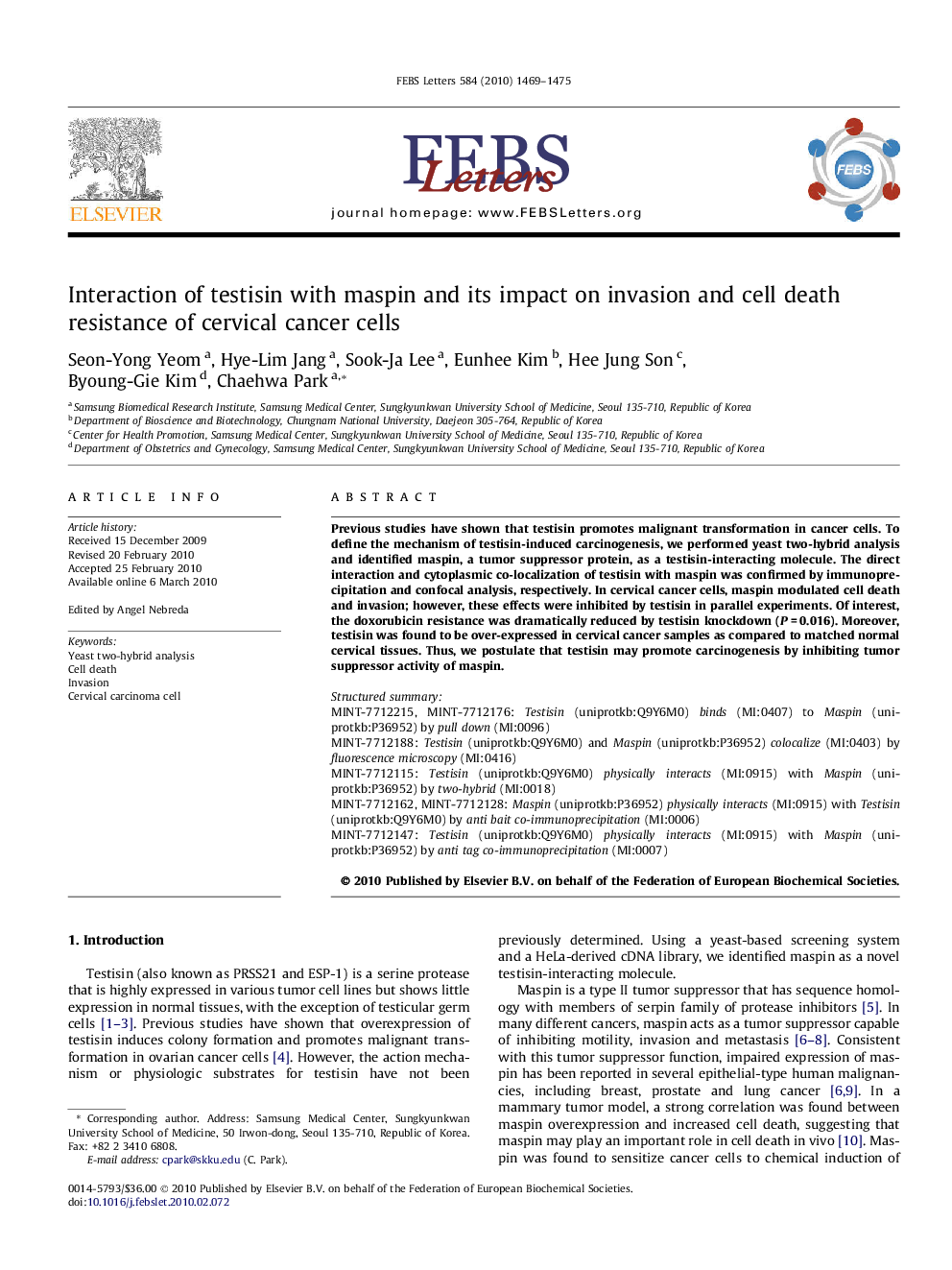| Article ID | Journal | Published Year | Pages | File Type |
|---|---|---|---|---|
| 2049142 | FEBS Letters | 2010 | 7 Pages |
Previous studies have shown that testisin promotes malignant transformation in cancer cells. To define the mechanism of testisin-induced carcinogenesis, we performed yeast two-hybrid analysis and identified maspin, a tumor suppressor protein, as a testisin-interacting molecule. The direct interaction and cytoplasmic co-localization of testisin with maspin was confirmed by immunoprecipitation and confocal analysis, respectively. In cervical cancer cells, maspin modulated cell death and invasion; however, these effects were inhibited by testisin in parallel experiments. Of interest, the doxorubicin resistance was dramatically reduced by testisin knockdown (P = 0.016). Moreover, testisin was found to be over-expressed in cervical cancer samples as compared to matched normal cervical tissues. Thus, we postulate that testisin may promote carcinogenesis by inhibiting tumor suppressor activity of maspin.Structured summaryMINT-7712215, MINT-7712176: Testisin (uniprotkb:Q9Y6M0) binds (MI:0407) to Maspin (uniprotkb:P36952) by pull down (MI:0096)MINT-7712188: Testisin (uniprotkb:Q9Y6M0) and Maspin (uniprotkb:P36952) colocalize (MI:0403) by fluorescence microscopy (MI:0416)MINT-7712115: Testisin (uniprotkb:Q9Y6M0) physically interacts (MI:0915) with Maspin (uniprotkb:P36952) by two-hybrid (MI:0018)MINT-7712162, MINT-7712128: Maspin (uniprotkb:P36952) physically interacts (MI:0915) with Testisin (uniprotkb:Q9Y6M0) by anti bait co-immunoprecipitation (MI:0006)MINT-7712147: Testisin (uniprotkb:Q9Y6M0) physically interacts (MI:0915) with Maspin (uniprotkb:P36952) by anti tag co-immunoprecipitation (MI:0007)
